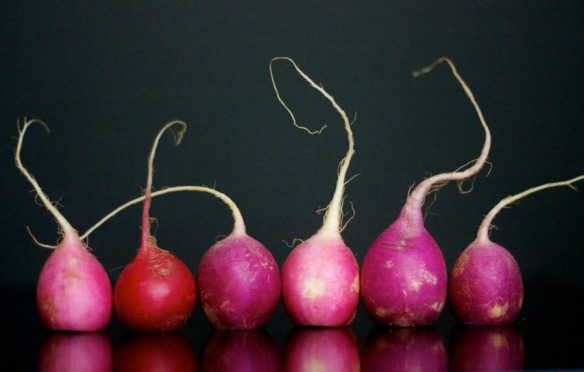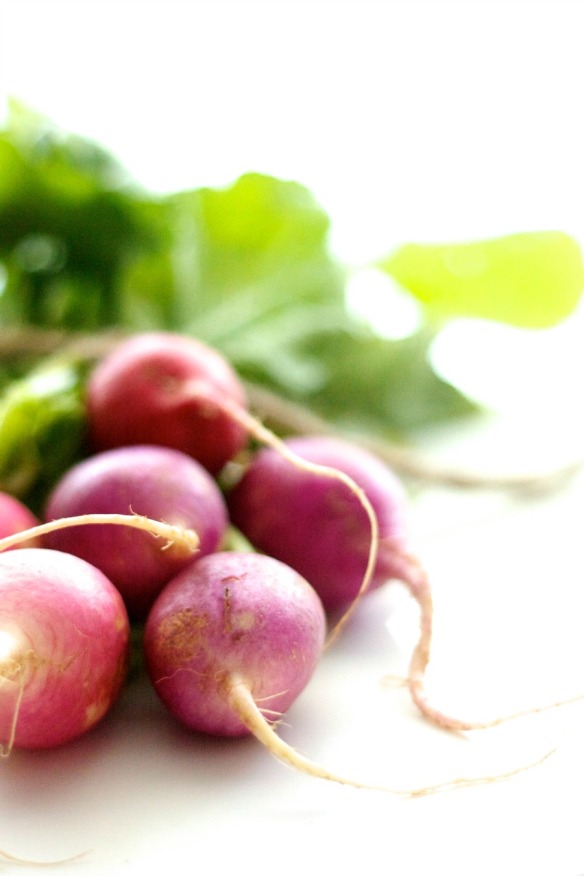Remember that food photography course I signed up for last week? Let me tell you, people. It has been so. Much. Fun!
And today I want to recap what I’ve learned in the first few days.
I’ve learned about several techniques for photographing food (see pictures and related assignments below), but I’ve also learned a few things specific to the way I approach photography:
- I over focus on taking pretty pictures. I understand my DSLR through and through, and shooting in manual mode is easy for me at this point. I love capturing pretty lighting and, as stated above, large DOFs. But I need to focus more on storytelling in my food photography, too. Practice, practice, practice.
- I’m obsessed with a shallow depth of field (DOF), but I often set my aperture too small. The areas where I need a sharp focus are often a bit blurred. I could alleviate this problem by purchasing tethering tools or by simply taking the same photograph several times using various aperture settings.
- I need a more objective eye. How the crap can anyone producing any art form see their own work from an objective viewpoint? When it’s your work—when you’re the one behind the camera, when you’re the one making the creative decisions—it’s nearly impossible to stand back and honestly analyze your photos.
Assignment 1: Finding the Best Camera Angle
What IS the best camera angle for food photographs? As my instructor Neel would say, the answer is simple: it depends.
It depends on what you’re photographing, what you aim to showcase about the subject, and what kind of story you’re telling.
The assignment was to photograph a subject from various angles, choosing the best angle based on what you’re trying to communicate about the subject.
I chose to photograph easter egg radishes. Visually interesting. And, let’s face it, inexpensive. I love their tail-like roots and decided to choose camera angles that best showcase those roots.
Here’s what I came up with:
Assignment 3: Framing the Photo
As stated on the assignment page:
For me—the viewer who’s looking at your photo—all I can see is the frame and what you as a food photographer chose to put inside the frame…When it comes to composing a photo, you have made a choice…knowingly or unknowingly, to let certain objects get in the frame and leave out some objects.
So we were told to take five shots, choosing a frame orientation (portrait or landscape), deciding where to place the main subject in that frame, and thoughtfully including or leaving out other objects.
Here are three of those shots:
By and large, the students in my class loved the first shot with the bread. The “money shot” as someone put it. I love it, too. The bread rounds out the photo and tells a better story than the others.
I did have someone leave the following comment:
“…bread has no business in a plate of pasta..been a chef and Italian. I can tell that for sure. Beautiful lighting by the way.”
I had a good laugh at this. Mostly because I’m American, and all the pasta I eat is probably wrong in one way or another. But I appreciated the authentically he pointed out. Another element to keep in mind when photographing food.
Assignment 3: Telling a Story
Honestly, I’m a bit embarrassed to share my photo from this assignment because I totally missed the mark.
We were asked to tell a story through our photo, whether that story’s main character is food or an experience (e.g., sharing coffee with a friend, serving breakfast in bed, eating while camping).
I tried to tell a story about how blooming tea…well, blooms. These photos are pretty, but I didn’t quite shape the story I was trying to tell. Of course, I realized that after sharing them with my classmates.
Ah, well. What can you do.
Here’s the final product. Click to enlarge.
That wraps up week one!
Feel free to leave your feedback. It helps me learn what I’m doing right, what I’m doing wrong, and what people are drawn towards when they see food photography.















Love the pics! My fav is the first one with the radishes… the one with leaves 🙂 colorful & fresh.
Keep the pics and blogs coming!
Hannah! Thank you. 🙂 So helpful to know what other people like.